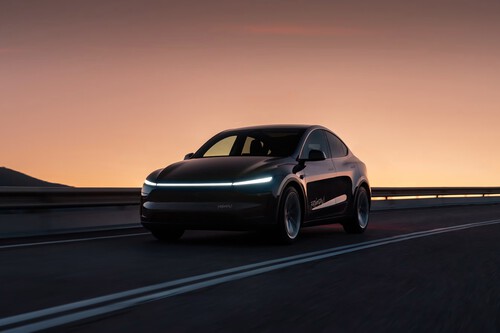Sunday, June 22, will be remembered in Tesla history as the first day the company operated its own robotaxi on the streets. As expected, the launch came with heavy restrictions, leaving some doubts and a few unfulfilled promises.
June 22. “Culmination of a decade of hard work,” Tesla CEO Elon Musk shared on X, referring to the inaugural rides made by the company’s robotaxi service. He took the opportunity to thank his team, emphasizing that “both the AI chip and software teams were built from scratch within Tesla.”
The first rides are taking place in Austin, with Tesla aiming to have a fully operational autonomous vehicle service by next year. However, the launch has started under significant limitations.
Strict restrictions. The service is currently limited to specific areas in Austin. Each vehicle has a Tesla employee in the passenger seat to monitor performance, and the service is open only to a select audience.
Passengers have reported that Tesla supervisors weren’t allowed to make any comments during the rides to avoid influencing the user experience. This cautious approach reflects Tesla’s desire to minimize risks during this launch by carefully choosing who can use the service.
Fans. This is undoubtedly the weakest aspect of the launch. In rolling out these autonomous taxis, U.S. regulations require them to operate on a limited basis with a closed group of users. Waymo initially opened its service to its employees and, after gaining regulatory approval, expanded to the general public.
In this case, Tesla has also restricted access to its potential customers but has chosen to focus on its own enthusiasts. A look at social media shows that those who have experienced the first rides are employees of Musk’s companies, fans of the brand, and some are even Tesla investors.
Unfulfilled promises. X has become flooded with positive testimonials about the service. However, Tesla hasn’t fulfilled two key aspects.
The first issue is that Tesla’s robotaxis are reportedly autonomous but still require a supervisor in the passenger seat. During the presentation of the Tesla Cybercab, which is expected to launch next year, Musk was careful not to mention whether these initial trips would include a human operator.
He refrained from doing so because it’s one thing to discuss deadlines and fail to meet them, and quite another to misrepresent regulations. The truth is that all autonomous vehicles operating in the U.S. have had to go through a phase of human supervision. Tesla couldn’t promise that the first rides would feature fully autonomous cars, so it focused on showcasing what its eventual service will look like.
However, it’s worth noting that in 2021, when fully autonomous vehicles seemed like a distant goal, Musk claimed that his cars would be able to operate without human intervention by 2023. This hasn’t materialized.
Steering wheels and pedals. The same narrative applies to the design of these robotaxis. Almost five years ago, Musk claimed that by 2023, consumers would be able to purchase a Model 2 for less than $30,000, one that wouldn’t require a steering wheel. The recently introduced Tesla Cybercab was presented with this same vision, but once again, critical details about the service’s launch were omitted, focusing instead on future possibilities.
Regulators currently don’t permit this type of vehicle to be introduced into the market. This regulation dashed the dreams of companies like Cruise. There’s one fundamental reason: If the vehicle experiences a failure or disconnection, emergency services must have access to a functional backup. As such, steering wheels and pedals remain essential components.
Deadlines. Now that the reality of regulatory changes has impacted the company, it remains to be seen if Musk can meet deadlines that seem nearly impossible for the future of autonomous cars in the country.
During the presentation of the Tesla Cybercab, Musk acknowledged his tendency to be “optimistic with time frames.” He then proceeded to set another ambitious target. He claims that Tesla’s robotaxis will be fully operational before 2027.
This means that in just 18 months, Tesla plans to launch a service available to the public, one that can generate revenue and operate throughout the entire city where it’s implemented. The company also wants all robotaxis to be equipped without a steering wheel or pedals. Achieving this would mark a significant milestone. No other competitor in the market has been able to accomplish this kind of feat, even after investing billions of dollars over the years in similar endeavors.
Images | Tesla
Related | China Has Swiftly Overtaken the U.S. in Yet Another Tech Field: Robotaxis




View 0 comments